There are as many ways to make caponata as there are cooks in Italy (and beyond). I know because I’ve read (and re-read) dozens of them. Eggplant, onions and vinegar seem to be the unifying elements in most of the recipes I’ve seen. From there cooks like to get creative. Michael Chiarello adds carrots and potatoes. Yotam Ottolenghi tilts the preparation towards Middle Eastern flavors with olives and harissa. Dominica Marchetti pre-salts to drain the eggplant. There are deep fried versions and pan-fried versions. Don’t let the array of recipes exhaust you. You’ll never find that one/true/authentic version. Everyone makes it the way they make it and so should you.
However, just in case you’re interested, I’ll give you my take on this classic Sicilian condimento.
The key to caponata for me is to keep it simple. Which isn’t to say caponata should be rushed. Taking the time to brown the eggplant on all sides in very hot oil will enrich its flavor and ensure a creamy texture. A good caponata is an example of what the Italians call agrodolce: “agro” (sour) and “dolce” (sweet). Therefore very good vinegar is key. I like the richness balsamic vinegar brings to caponata. However, all on it own balsamic can be a bit cloying – an additional splash of red wine vinegar brings the astringency my palate requires.
Nancy Silverton makes a particularly rich version at Pizzaria Mozza here in Los Angeles. I’ve used her recipe as the basis of mine. The only flourishes in my version are orange zest to finish the dish and a pinch of cocoa powder as suggested by Mario Batali. Which doesn’t make the caponata chocolatey, but it does add further richness and an indefinable depth. He also suggests cinnamon, but that’s a flourish too far for my taste.
Caponata is great warm or at room temperature, and it always tastes better after a day or two. I usually serve caponata as part of a antipasti spread, but it makes a great sauce for pasta or Sicilian couscous. It’s also delicious with sharp and/or salty cheese: try smearing it over rustic bread with a good crumble of aged pecorino. GREG
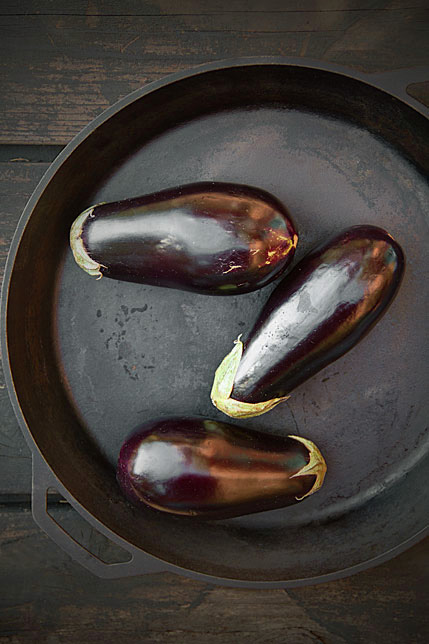
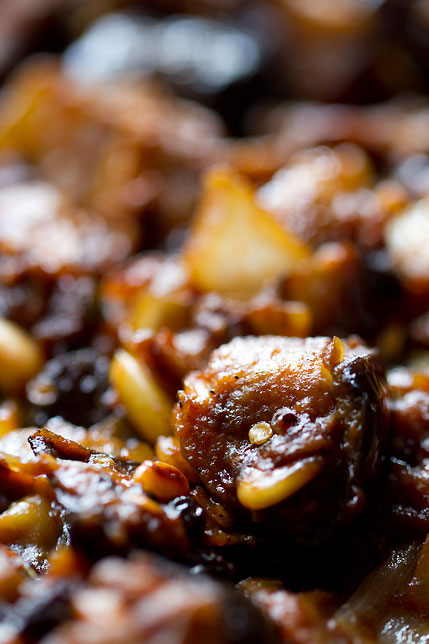
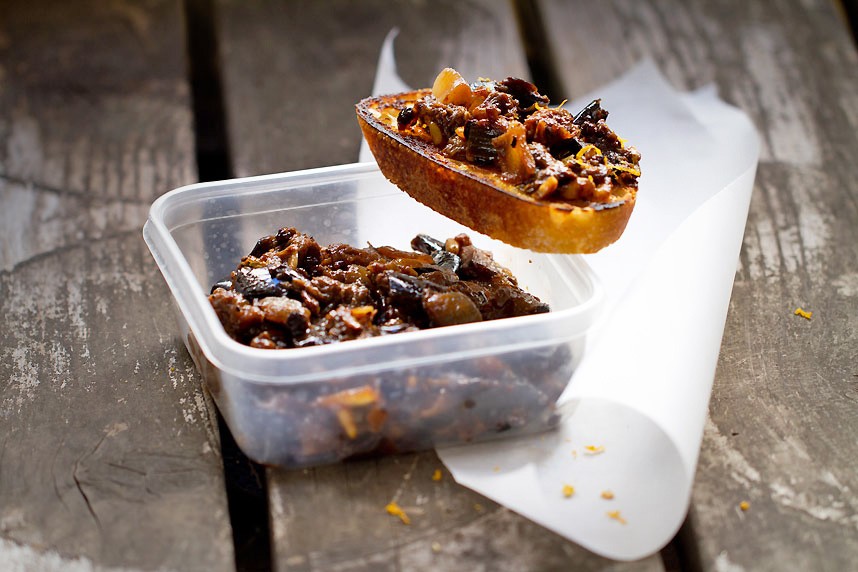
Can be stored in the refrigerator up to 5 days.
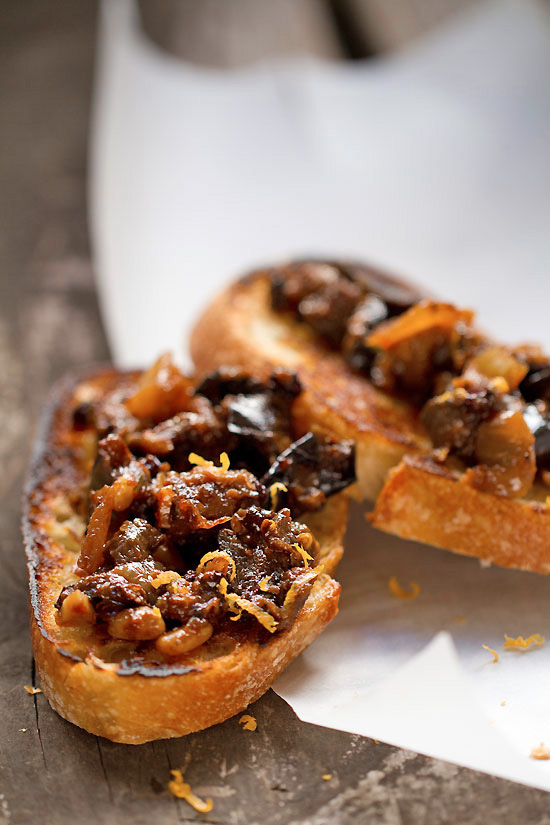
Ingredients
- 1 ½ pound eggplant (cut into 1‑inch cubes)
- salt and pepper (as needed)
- ½ cup extra-vrgin olive oil (separated, plus more if needed)
- 1 onion (peeled and cut into 1‑inch chunks)
- 2 clove garlic (peeled and thinly sliced)
- 3 tablespoon dried currants
- ½ teaspoon crushed red pepper flakes
- ½ cup tomato sauce (not too chunky)
- ¼ cup balsamic vinegar
- 2 tablespoon red wine vinegar
- 1 teaspoon fresh thyme leaves
- 1 teaspoon cocoa powder
- 1 teaspoon granulated sugar
- ¼ cup lightly toasted pine nuts (divided)
- 1 teaspoon freshly grated orange zest
Directions
Place the eggplant cubes in a bowl, sprinkle generously with the salt and pepper; toss to coat.
Heat ¼ cup of the olive oil in a 12-inch or larger saute pan over medium-high heat until the oil shimmers. Add the eggplant in as close to single layer as possible. Don’t worry if it doesn’t quite fit in one layer, the eggplant will good down quickly. Cook, without stirring, for about 3 minutes or until the eggplant begins to brown on the bottom. Once it does use a spatula to turn the cubes onto uncooked sides and cook another 2 or 3 minutes. Turn the eggplant again and drizzle another ¼ cup of oil over the eggplant. Continue to cook, turning only when necessary to promote even browning, for 8 or more minutes as needed. You may need to add a touch more oil if the pan begins to look dry. Keep cooking and turning until the eggplant is very brown all over.
Use a slotted spatula to move the eggplant to a paper towel-lined baking sheet and reduce heat to medium. Add the onion to the pan and cook, stirring constantly until onion is translucent but not yet beginning to color, about 4 minutes. Add the garlic, currants, and red pepper flakes. Cook until the garlic is fragrant, stirring constantly, about 2 minutes. Add the tomato sauce, balsamic vinegar, red wine vinegar, thyme, cocoa powder and sugar; stir to combine.
Lower the heat to medium-low. Return the eggplant to the pan and add half of the toasted pine nuts. Stir gently to combine the ingredients, cover and cook for 5 minutes. Remove the lid, stir, and cook for another 5 minutes, or until almost all of the liquid is evaporated. Taste for seasoning and add more salt, sugar or vinegar, if desired. Let the caponata cool completely in the pan.
Once cool, transfer to a serving bowl and sprinkle with remaining pine nuts and orange zest.
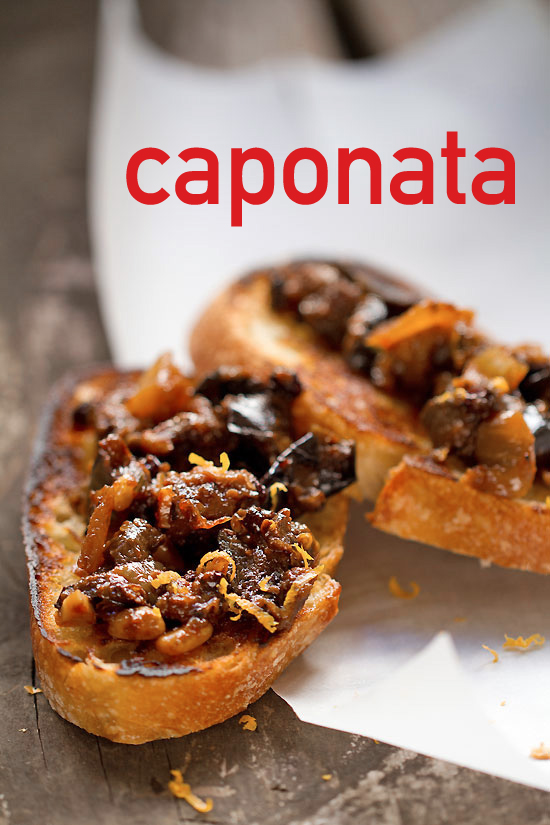




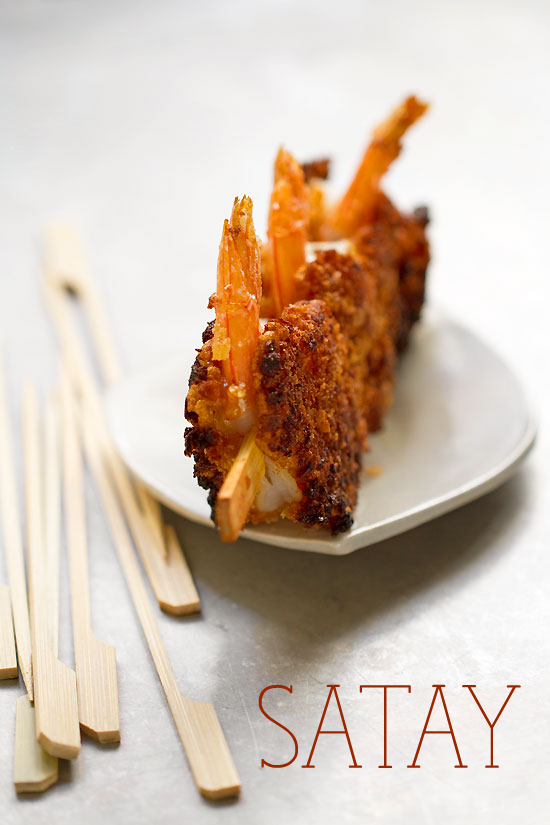
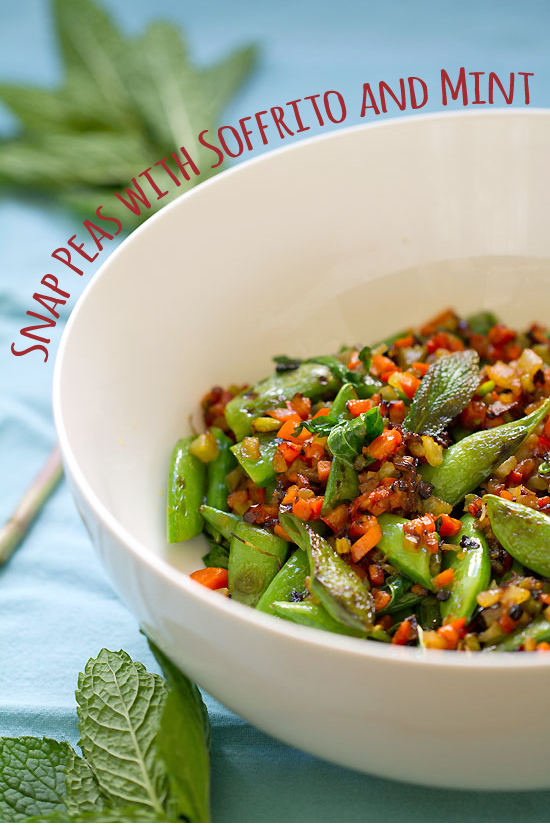
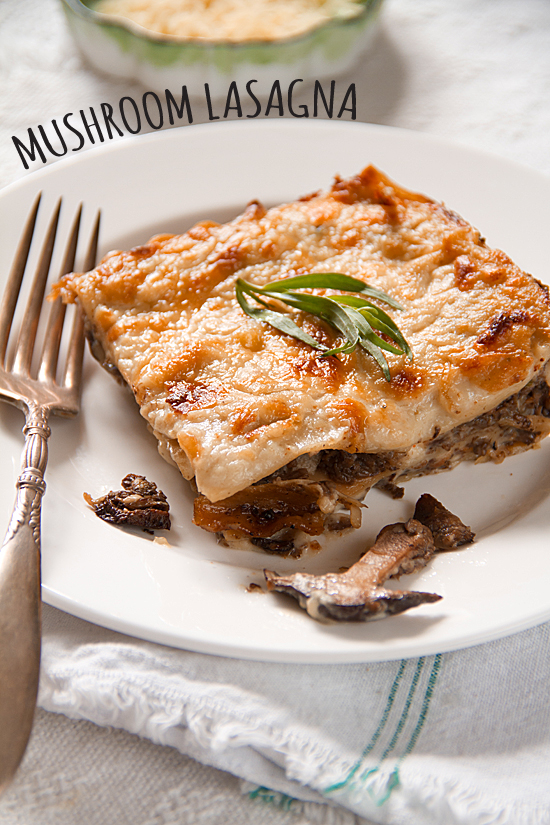
You are a wonderful writer! I am going to give this one a shot. I’ve never had caponata before, and it looks like I am missing out. Thanks for sharing, Greg!
I was going to make bruschetta but I think I’m going to try this one instead. It seems more hearty, more “I’m not going to spill all over my new shirt” like most appy’s. Haha!
Great post!
Ashley
Oh dear, it looks like I’ve missed so much while we were in Arizona! This looks amazing Greg, I adore egg plant! We’re having some friends in for dinner on Saturday and this looks like a wonderful starter for the dinner. I love adding a pinch of chocolate to it, it adds such a depth of flavour and balancing the balsamic (which I too find all too coying) with red wine vinegar is very clever. This will make a very nice addition to my dip repertoire, thank you!
I’d love to make a meal out of this and your sofrito—capofrito!
I love your version. I love my version. Heck, I am not sure there is a version I wouldn’t like. The currants in yours intrigue me.
I really want to eat some, I’ve never made it at home ever. I need to take down this one to try it out, looks easy and delicious.
I agree with Geraldine, your writing is amazing.
I love to eat this but have never made it, the time is now! Have I mentioned that I love the design of your site?
I want this right now. I am especially loving the crispness along the edges of the bread — the perfect vehicle for this bundle of deliciousness!
Love caponata and haven’t had it in ages. You’ve inspired me to change that and get in the kitchen to make some.
Nancy Silverton is an inspired cook. I know mainly her bread recipes, but she does so much more. Anyway, I haven’t had (or made!) caponata in ages. And the weather is starting to get a bit warmer here (already is in LA, I know) — perfect caponata weather. Cocoa powder? Really interesting surprise! Very creative recipe — thanks.
This is one caponata I could be quite happy with. Orange zest and cocoa? Yes, please!
Greg, thank you so much for introducing me to caponata — I’ve been seriously missing out! Can’t wait to give this a try.
Cocoa in caponata condimento. Love it!
Ok, yes, I suppose caponata is technically a condimento,
but I eat it as a whole meal!
Can’t wait to try your Rx. xo
Definitely one of my favorite ways to eat eggplant! Your caponata looks wonderful!
I love the cocoa powder and orange zest addition.
This looks great, Greg. I also love the way you write — I always learn something!
I like your version of caponata, it looks tasty. I make something similar where I roast the vegatables I use.